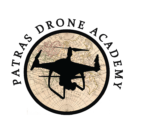The use of drones in precision agriculture and aerial spraying has revolutionized the agricultural sector, providing farmers with new possibilities and methods to improve production and crop efficiency. Drones, equipped with sophisticated sensors ,cameras & sprayers, enable real-time data collection and analysis, facilitating more accurate monitoring and management of farmland. In this way we can do the following :
- Crop monitoring: Drones can fly over fields and record data through high-resolution photos and video. This data helps farmers identify areas where crops are experiencing problems, such as drought, disease or inadequate fertilization.
- Soil mapping and soil analysis: Using special sensors, drones can record data on soil moisture, pH and nutrient status. This information helps in the optimal management of agricultural land, allowing for the precise application of fertilizers and irrigation.
- Accuracy of application: Aerial drones can be programmed to spray only specific areas of crops, avoiding unnecessary use of chemicals in areas that do not need treatment. Using GPS and sensor technologies, spraying can be done with millimetre precision, minimising excessive pesticide and fertiliser use.
- Pesticide and fertiliser application: drones can spray pesticides and fertilisers precisely in specific areas, reducing chemical overuse and environmental impact. In addition, this technology helps reduce the cost and time required for traditional application methods.
- Speed and efficiency: Drones are capable of spraying large areas in a short period of time, compared to traditional spraying methods. They can reach difficult areas, such as slopes or areas with wet soil, where traditional spraying machines have difficulties.
- Crop yield prediction: Using artificial intelligence and data analytics, farmers can predict the yield of their crops and make decisions related to harvesting and selling their produce. Drones offer information that facilitates production planning and operations.
The advantages of using Drones in Precision Agriculture are great and as time goes on more and more farmers are integrating Drones to their advantage, some of them are:
- Increased productivity: Farmers can detect problems earlier and take action before damage becomes widespread, thus increasing crop profitability.
-
- Saving resources: accurate application of pesticides and fertilisers reduces unnecessary use of chemicals and water consumption, helping to protect the environment.
- Improving management: The ability to monitor in real time allows farmers to have a complete picture of the state of their crops and adjust their tactics according to conditions.
- Reducing labour costs: Using drones for tasks such as mapping and spraying reduces the time and cost required for traditional methods.
- Remote spraying : Traditional spraying often exposes workers to hazardous chemicals. With drones, spraying is done from a distance, reducing the chance of contact with pesticides and improving worker safety.
Challenges and Constraints
Despite the benefits, the use of drones in precision agriculture also faces some challenges. The initial cost of purchasing and maintaining drones can be high for small farmers, and training in their use requires time and expertise. Also, there are regulatory issues related to the use of drones in rural areas, such as the need for operator licenses as Special Category is required in Standard Scenarios STS-01 and the construction of the Flight Operations Manual for approval of the flight activity to the Civil Aviation Authority.
The use of drones in precision agriculture and aerial spraying is an important step towards optimising production and farmland management. With the continued development of the technology, drones are expected to play an even greater role in enhancing the sustainability and efficiency of the agricultural sector in the near future.

